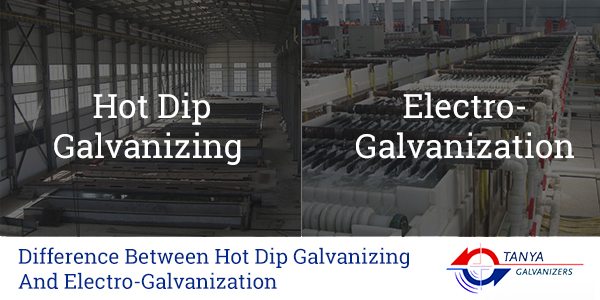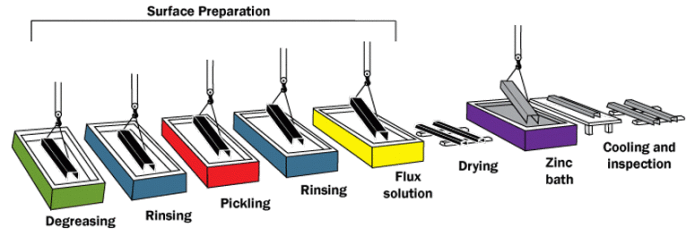Galvanizing is termed to be among the most widely utilized methods to safeguard metal from corrosion. This method tends to involve applying zinc in thin coating to thick base metal, to help shield the same from surrounding environment. A good number of lamp posts and street signs can be found to have silver color upon them. This silver is stated to be actually zinc coating.
Why Galvanizing?
Having a metal galvanized provides it with anti-corrosion properties. Without using protective zinc coating, metal would be remain exposed to the different elements and oxidize as well as corrode quickly. As a matter of fact, galvanized steel can prove to be cost effective solution when compared to using materials like aluminum or austenitic stainless steel for preventing corrosion. Hot dip galvanizing services in Vadodara offered by the reputed providers can help the organization to stay ahead in competition.
Know the different galvanizing methods
Several processes are involved for galvanizing metal, which are given below:
Hot dip galvanizing: Like the name suggestions, this particular tends to involve the base metal getting dipped into molten zinc pool. Initially, the base metal is to be cleaned chemically, manually or probably both for assuring good quality bond that can be achieved between zinc coating and base metal. After getting cleaned, base metal gets fluxed for eliminating residual oxides present after completion of the cleaning process. base metal gets dipped into heated zinc liquid bath to form metallurgical bond. The benefit derived from this specific method is considered to be economical and can be quickly performed to complex shapes. But final coating is stated to be inconsistent and relative to the other processes of galvanizing.
Related: Hot Dip Galvanizing Process | Tanya Galvanizers
Electro Galvanizing: This type is said not to make use of molten zinc bath. Rather, the process uses electrical current within an electrolyte solution for transferring the zinc ions into base metal. It involves the electrically reducing zinc ions that are positively charged into zinc metal that gets deposited onto positively charged material. also can be included grain refiners to ensure steel getting smooth zinc coating. This method is applied typically to sheet metal roll. The benefits to be derived from it are precise coating thickness and uniform coating. But the coating may be thinner than zinc coating that is achieved through hot dip galvanizing process, thus resulting in diminished corrosion protection.
Take a look at our blog for Difference Between Hot Dip Galvanizing And Electro-Galvanization
Pre-galvanizing: It is a method that is found to be quite similar to that of hot dip galvanizing. However, it is at a steel mill that it gets performed, typically on materials, which have already a particular shape. This method involves metal sheet being rolled through a cleaning process, which is similar to hot dip galvanizing procedure. Then, this metal is passed through pool of liquid hot zinc to be recoiled. A major benefit derived from this particular method is that steel sheet in large coils could be galvanized within a short span of time having more uniform coating, unlike that of hot dip galvanizing. However, the cons are that after pre-galvanized metal fabrication takes place, the uncoated, exposed areas become present. It effectively means, when long sheet coil is cut to small sizes, its edges where metal gets cut remains exposed.
Reputed providers like Galvanizers have their certified hot dip galvanizing plant from where they produce different types of galvanized products like cable trays, crash barrier, race ways, earthing strips, earthing materials, sub-station structures and much more.
Get in touch with us call: (0265) 2632517 (O), Mobile : +91 8000842648








